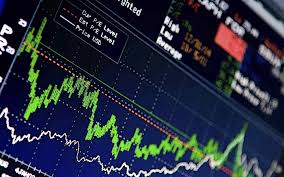The global economy is not out of the wood

By Godwin Anyebe
The global economy was full of surprises in 2023. Despite the sharp rise in interest rates, the United States successfully avoided a recession, and major emerging markets did not spiral into a debt crisis.
Even Japan’s geriatric economy exhibited stunning vitality. By contrast, the European Union fell behind, as its German growth engine sputtered after China’s four-decade era of hypergrowth abruptly ended.
Looking ahead to 2024, several questions loom large. What will happen to long-term inflation-adjusted interest rates? Can China avoid a more dramatic slowdown, given the turmoil in its real-estate sector and high levels of local-government debt? Having maintained near-zero interest rates for two decades, can the Bank of Japan (BOJ) normalize rates without triggering systemic financial and debt crises?
Will the delayed effects of the Federal Reserve’s interest-rate hikes eventually push the US into a recession? Can emerging markets maintain stability for another year?
READ ALSO: Does Benue have a Chief security officer?
Lastly, what will be the next major source of geopolitical instability? Will it be a Chinese blockade of Taiwan, former President Donald Trump winning November’s US presidential election, or an unforeseen event?
The answers to these questions are interconnected. A recession in the US could lead to a significant decrease in global interest rates, but this may provide only temporary relief. After all, several factors, including extraordinarily high debt levels, creeping deglobalization, rising populism, the need to increase defense spending, and the green transition, will likely keep long-term rates well above the ultra-low levels of 2012-21 for the next decade.
Meanwhile, Chinese leaders’ significant efforts to restore five per cent annual economic growth face several daunting challenges. For starters, it is hard to see how Chinese tech firms can remain competitive when the government continues to stifle entrepreneurship. And China’s debt-to-GDP ratio, which surged to 83 per cent in 2023, compared to 40 per cent in 2014, constrains the government’s ability to provide open-ended bailouts.
Given that government support is crucial to addressing the high local-government debt and the over-leveraged property sector, China’s emerging plan appears to be to spread the pain. This entails allocating national funds to provinces, then compelling banks to extend loans to insolvent firms at below-market interest rates, and finally, curbing new borrowing by local governments.
But it will be hard to keep the Chinese economy firing on all cylinders while simultaneously imposing restrictions on new lending. Although China is already shifting away from real estate to green energy and electric vehicles (to the dismay of German and Japanese carmakers), real estate and infrastructure still account for more than 30 per cent of Chinese GDP, as Yuanchen Yang and I recently showed, underscoring these sectors’ direct and indirect impact.








